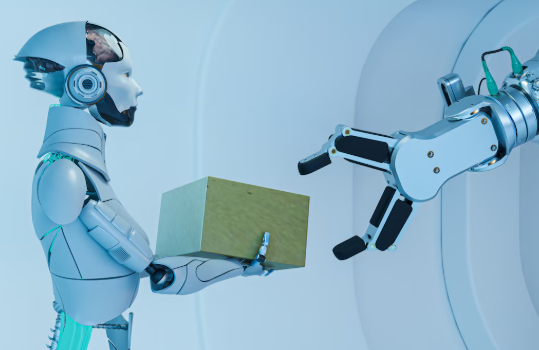Generative AI, AI innovation, AI application in business, and data science and artificial intelligence are reshaping industries at an unprecedented pace. Behind the seamless outputs of chatbots, virtual assistants, and enterprise-grade AI tools lies a technical foundation built on tokens and embeddings. These two concepts may sound abstract, but they are central to how large language models (LLMs) like ChatGPT, Gemini, or Claude understand and generate human-like text.
At STL Digital, we aim to demystify these concepts for businesses, helping them leverage the power of AI for smarter decision-making and digital transformation. In this blog, we will break down what tokens and embeddings mean, how they influence LLM performance, and why organizations should pay attention to them. We will also explore industry benchmarks and future trends while showing how companies can harness this knowledge for transformative results.
What Are Tokens?
Tokens are the building blocks of LLMs. They represent small chunks of text—sometimes a single character, a syllable, or even an entire word, depending on the tokenizer. For example:
- The word “technology” might be split into two tokens: “tech” and “nology.”
- A sentence like “AI is transforming business” could become five tokens: “AI”, “is”, “transform”, “ing”, “business.”
Every time an LLM processes input or generates output, it counts tokens. This directly affects cost, efficiency, and accuracy.
From a business perspective, tokenization has practical consequences:
- Cost Optimization: Cloud providers like OpenAI, Anthropic, and Google often charge based on token usage. Optimizing how prompts are structured can significantly reduce costs.
- Performance Tuning: Shorter prompts with fewer tokens can lead to faster responses.
- Context Window Management: Each LLM has a limit on the number of tokens it can handle at once (e.g., 128k tokens in GPT-4 Turbo). Managing this window effectively ensures smoother workflows.
In other words, understanding tokens isn’t just for AI engineers—it’s critical knowledge for organizations investing in AI application in business operations.
What Are Embeddings?
If tokens are the alphabet of LLMs, embeddings are their grammar and meaning.
Embeddings are numerical representations of tokens. Each word or phrase is mapped into a high-dimensional vector space where similar concepts are closer together. For example:
- “Doctor” and “Nurse” might be represented by vectors that lie close to each other.
- “Doctor” and “Banana” would be much farther apart.
This numerical mapping allows LLMs to understand context and semantics. Instead of just recognizing words, they grasp relationships, tone, and intent.
For businesses, embeddings open new possibilities:
- Semantic Search: Searching not just for exact words, but for meaning. For example, a search for “affordable smartphones” could also return results for “budget mobile devices.”
- Recommendation Engines: Retail and e-commerce companies use embeddings to recommend products based on customer behavior.
- Fraud Detection: Financial institutions use embeddings to detect unusual transaction patterns.
This is where Data Science and Artificial Intelligence meet practical business needs. The more accurate the embeddings, the smarter the AI applications.
Why Tokens and Embeddings Drive LLM Performance
The performance of any LLM depends on two critical factors:
- How efficiently tokens are managed
- How accurately do embeddings capture meaning
If the tokenizer breaks down text poorly, the model struggles to interpret intent. If embeddings are not well-structured, the model might miss nuances. Together, they determine:
- Accuracy: Correctness of answers.
- Scalability: Ability to handle massive datasets.
- Speed: Time taken to deliver results.
According to Gartner, more than 30% of the increase in demand for APIs will come from AI and tools using LLMs by 2026. This surge highlights how tokens and embeddings are not just academic concepts—they are fueling the core infrastructure of enterprise-grade AI.
Benchmarks That Prove Their Impact
Performance benchmarks validate how well tokens and embeddings work in practice. Among them, the Massive Multitask Language Understanding (MMLU) benchmark has become the gold standard.
Created in 2020, MMLU tests AI models across 57 subjects, from mathematics to law. The upgraded MMLU-Pro in 2024 added even more challenging datasets.
As reported by Statista, all major LLMs now score 75% or higher on MMLU as of May 2025. OpenAI’s o1, Anthropic’s Claude, and Google’s Gemini consistently perform well, showing that tokenization and embeddings are maturing rapidly.
But MMLU isn’t the only benchmark:
- Multilingual Index Benchmark: Measures multilingual strength, where o1 excels.
- Coding Index Benchmark: Focuses on programming performance, where DeepSeek R1 is highly competitive.
- Humanity’s Last Exam (HLE): A massive set of 2,700 questions across topics, testing reasoning depth.
These benchmarks confirm that generative AI tools are becoming smarter, faster, and more reliable.
Business Use Cases of Tokens and Embeddings
Tokens and embeddings might feel “too technical,” but their applications are everywhere in AI innovation today:
- Customer Support
- Token optimization reduces cost per interaction.
- Embeddings enable smarter FAQs and contextual responses.
- Healthcare
- Embeddings improve diagnosis suggestions by finding relationships in patient data.
- Token-efficient systems help manage large volumes of medical records.
- Finance
- Fraud detection models rely on embeddings to catch unusual behavior.
- Token optimization ensures faster compliance checks.
- Retail & E-commerce
- Product recommendations use embeddings for accuracy.
- Customer chats use token-efficient prompts to keep costs manageable.
- Content Creation
- Tokens allow AI models to stay within cost-effective boundaries.
- Embeddings ensure generated content aligns with tone and style.
For companies exploring AI applications in business, mastering these concepts directly impacts ROI.
The Future of Tokens and Embeddings
The evolution of tokens and embeddings is still unfolding. Here’s what lies ahead:
- Larger Context Windows: Future LLMs will handle millions of tokens, allowing businesses to process entire books or legal libraries at once.
- Smarter Embeddings: Next-gen embeddings will capture not just meaning, but emotional tone and cultural context.
- Hybrid Models: Enterprises will combine LLMs with domain-specific embeddings for specialized tasks like legal AI, healthcare AI, or supply chain AI.
- Cost Reduction: As token optimization improves, businesses will save significantly on cloud usage fees.
The trend is clear: data science and artificial intelligence will keep refining how tokens and embeddings shape enterprise applications.
Partnering for Success
Decoding tokens and embeddings is just the start. To leverage these insights, businesses need expert guidance. That’s where STL Digital comes in.
STL Digital empowers organizations to implement Generative AI, AI innovation, AI application in business, and data science and artificial intelligence strategies that drive measurable outcomes. From designing token-efficient prompts to building embedding-powered analytics, STL Digital ensures enterprises stay ahead of the curve.
Final Thoughts
Tokens and embeddings are not just technical jargon—they are the DNA of modern AI. They define how LLMs understand language, scale across industries, and deliver value to businesses.
As benchmarks like MMLU-Pro and Humanity’s Last Exam show, generative AI models are growing smarter by the day. Organizations that invest in understanding and applying tokens and embeddings will unlock competitive advantages in customer engagement, operations, and innovation.
By collaborating with partners like STL Digital, enterprises can fully embrace the power of AI innovation, AI application in business, and data science and artificial intelligence to shape a smarter, more connected future.



